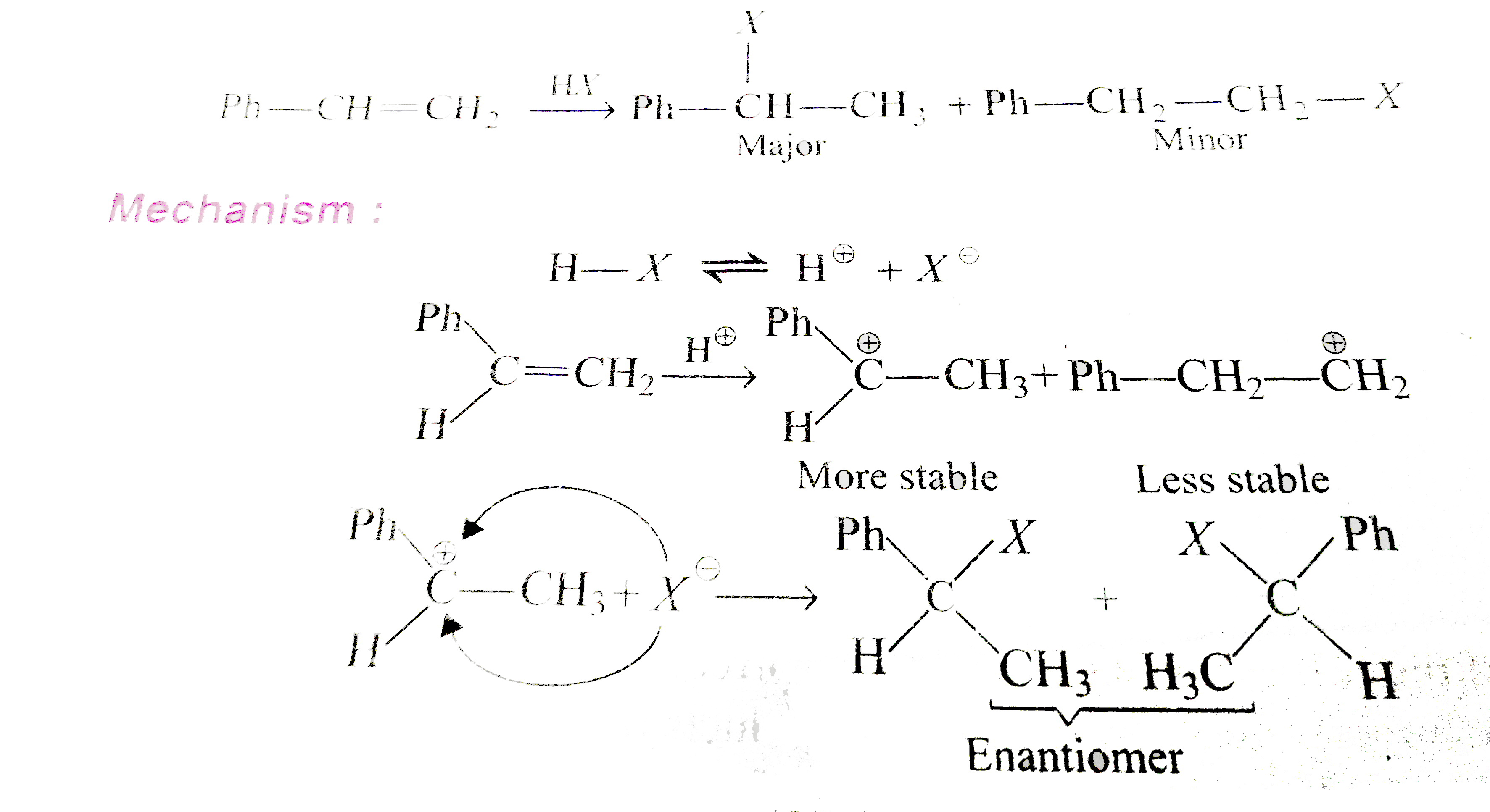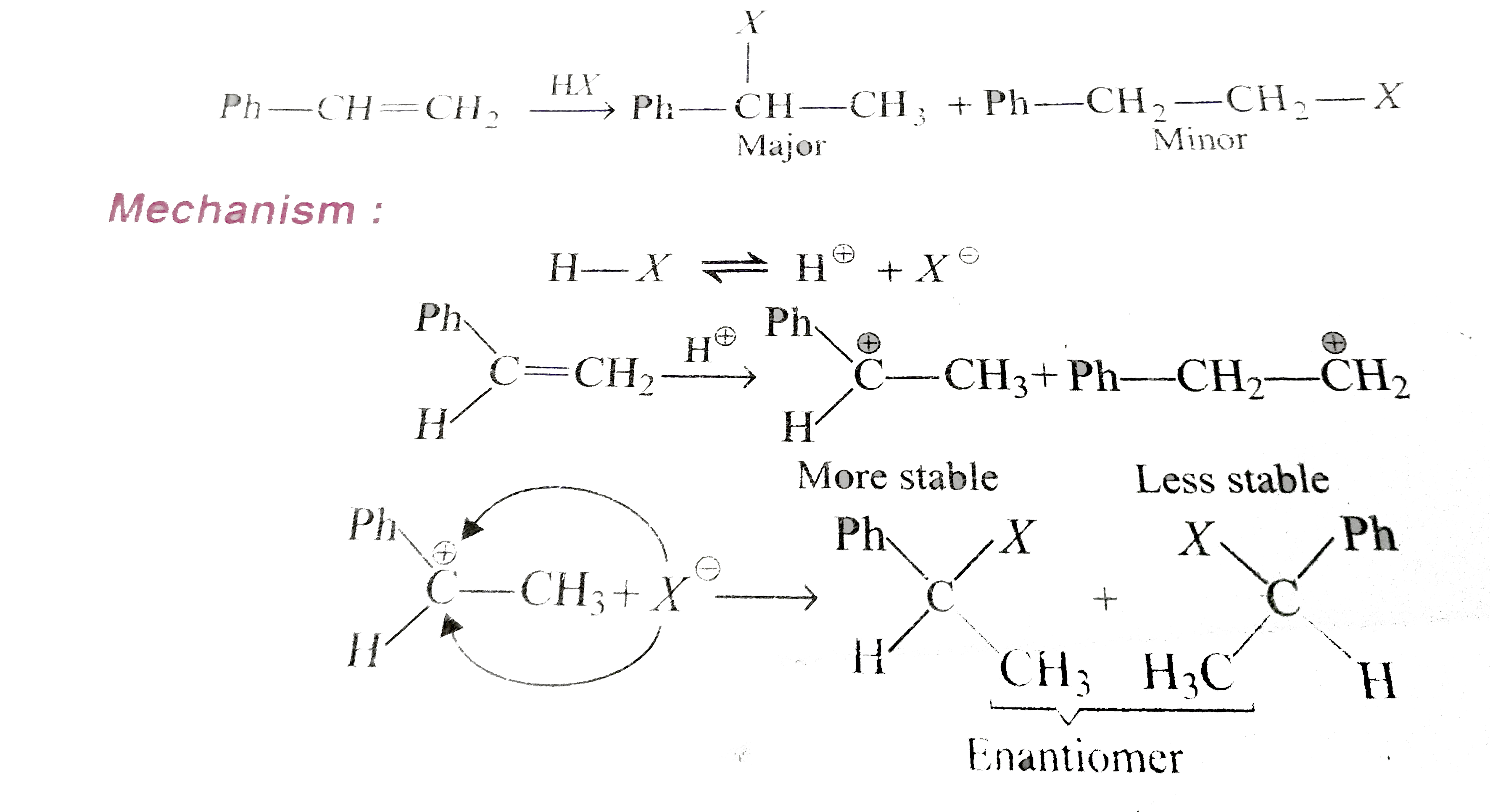The markownikoff’s rule is used in connection with -
Stereochemistry of elimination reactions
Stability of free radicals.
Activity of enzymes
Addition of acids to double bonds
The correct Answer is:D
Step-by-Step Solution:
1. Understanding Markovnikov's Rule: Markovnikov's rule is a principle in organic chemistry that predicts the outcome of the addition reactions of protic acids (like HCl, HBr, HI) to alkenes. It states that when a protic acid adds to an asymmetric alkene, the hydrogen atom (H+) will attach to the carbon atom that has more hydrogen atoms already attached (the more substituted carbon), while the halide (X-) will attach to the carbon with fewer hydrogen atoms.
2. Identifying the Context: The question asks what Markovnikov's rule is used in connection with. The options provided are:
- Stereochemistry
- Stability
- Activity
- Addition
3. Analyzing the Options:
- Stereochemistry: This refers to the spatial arrangement of atoms in molecules. While related, it is not the primary focus of Markovnikov's rule.
- Stability: This term refers to the stability of intermediates or products but does not directly relate to the rule itself.
- Activity: This term is vague in this context and does not specifically relate to the addition reactions described by Markovnikov's rule.
- Addition: This option directly relates to the addition reactions of alkenes with protic acids, which is the essence of Markovnikov's rule.
4. Conclusion: Based on the analysis, Markovnikov's rule is primarily used in connection with addition reactions of alkenes with protic acids.
Final Answer: Markovnikov's rule is used in connection with addition reactions.
---
- Stereochemistry
- Stability
- Activity
- Addition
- Stereochemistry: This refers to the spatial arrangement of atoms in molecules. While related, it is not the primary focus of Markovnikov's rule.
- Stability: This term refers to the stability of intermediates or products but does not directly relate to the rule itself.
- Activity: This term is vague in this context and does not specifically relate to the addition reactions described by Markovnikov's rule.
- Addition: This option directly relates to the addition reactions of alkenes with protic acids, which is the essence of Markovnikov's rule.
Topper's Solved these Questions
- BOOK - MOTIONCHAPTER - HYDROCARBON EXERCISE - Exercise - 2 (Level-I)29videos
HYDROCARBON
- BOOK - MOTIONCHAPTER - HYDROCARBON EXERCISE - Exercise - 314videos
HYDROCARBON
- BOOK - MOTIONCHAPTER - HYDROCARBON EXERCISE - QUESTIONS6videos
HYDROCARBON
- BOOK - MOTIONCHAPTER - GRIGNARD REAGENTEXERCISE - EXERCISE-216videos
GRIGNARD REAGENT
- BOOK - MOTIONCHAPTER - IONIC EQUILIBRUIMEXERCISE - Exercise -4 (Level -II)14videos
IONIC EQUILIBRUIM
Similar Questions
Knowledge Check
- Question 1 - Select One
Markownikoff rule is best applicable to
AC2H4+HClBC3H6+Br2CC3H6+HBrDC3H6+Cl2 - Question 2 - Select One
Markownikoff's rule governs the addition of
Aasymmetrical reagent to symmetrical alkenesBsymmetrical reagent to asymmetrical alkenesCasymmetrical reagent to asymmetrical alkenesDsymmetrical reagnet to symmetrical alkenes - Question 3 - Select One
In which of the following reactions Markownikoff's rule of addition reaction is followed
A B
B C
C D
D
Markownikoff's rule provides guidance of addition of HX on
View SolutionIn which of the folllowing alkenes, Markownikoff's rule is not applicable ?
View SolutionMarkownikoff rule provides guidance of addition of HBr
View SolutionAddition of HX on alkene proceed through the formation of carbocation .This reaction is also kjnown as Markownikoff reaction.Accroding to Markownikoff's rule addition of electrophile occurs on theat crbon of alkene which have mor number of 'H' atom.

Which of the Following alkenes will give Markownikoff reaction?View SolutionAddition of HX on alkene proceed through the formation of carbocation .This reaction is also kjnown as Markownikoff reaction.Accroding to Markownikoff's rule addition of electrophile occurs on theat crbon of alkene which have mor number of 'H' atom.

Which of the following alkenes can produce diastereomers?View Solution

